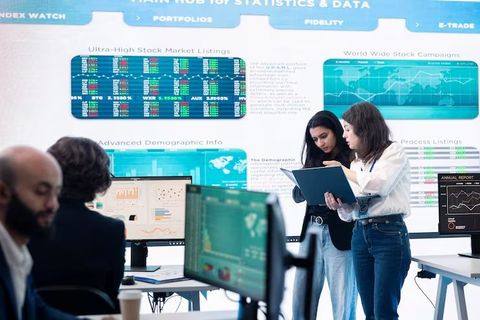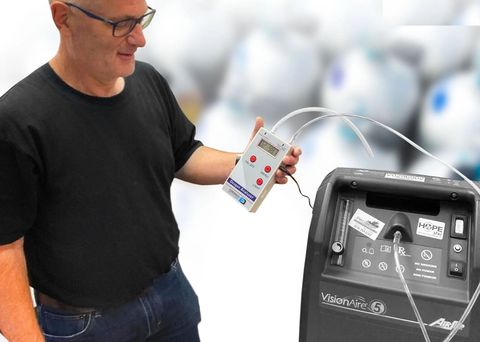Complete Guide for Applicant Tracking and Recruiting Software
Applicant Tracking Systems (ATS) and recruiting software have transformed how companies find, screen, and hire talent. These platforms automate key steps in the hiring process, from job posting to onboarding.
The idea behind applicant tracking software emerged from the need to manage large volumes of job applications efficiently. As organizations grew and online job boards expanded, manual recruitment became time-consuming and error-prone. Today, ATS solutions serve as centralized systems where recruiters can handle resumes, schedule interviews, and communicate with candidates all in one place.

Recruiting software not only improves internal workflow but also enhances the candidate experience, which is crucial in competitive job markets. With modern features like AI-driven resume screening, keyword matching, and interview scheduling, these tools help businesses make faster, data-backed hiring decisions.
Importance
In a world where hiring the right talent determines organizational success, applicant tracking and recruiting software have become indispensable.
Key reasons why they matter today include:
-
Efficiency: Automates repetitive tasks such as resume sorting and interview scheduling.
-
Accuracy: Uses data-driven algorithms to match job requirements with the best candidates.
-
Transparency: Keeps candidates informed about their application status, improving employer reputation.
-
Scalability: Suitable for both small startups and large enterprises managing thousands of applicants.
-
Compliance: Helps companies adhere to labor laws and record-keeping requirements.
For HR professionals, these systems reduce administrative workload and human bias, allowing more time for strategic decisions like workforce planning and talent development.
Who benefits the most?
-
Recruiters: Gain centralized control over candidate data.
-
Hiring Managers: Access detailed insights and analytics for decision-making.
-
Candidates: Experience a smoother, faster, and more transparent application process.
Recent Updates
The year 2024–2025 brought several key innovations in the applicant tracking and recruitment landscape. As artificial intelligence and data analytics evolve, ATS platforms are becoming more intuitive and human-centric.
| Trend | Description |
|---|---|
| AI-Powered Resume Screening | AI now helps identify the most relevant candidates by analyzing keywords and contextual data from resumes. |
| Chatbot Integration | Chatbots engage applicants, answer queries, and assist in scheduling interviews 24/7. |
| Diversity and Inclusion Analytics | Tools track demographic data to support unbiased recruitment practices. |
| Remote Hiring Tools | Platforms like Greenhouse and Workable added built-in video interview and skill testing options. |
| Integration with Job Boards | Enhanced API connections with LinkedIn, Indeed, and Glassdoor for seamless posting and tracking. |
| Data Privacy Enhancements | Compliance features to align with GDPR (EU), CCPA (US), and other global data protection laws. |
According to a 2024 SHRM survey, over 80% of organizations now use some form of applicant tracking software, compared to only 56% in 2018. This shift highlights the growing trust in digital hiring processes and the importance of structured data management.
Laws or Policies
Recruiting and applicant tracking systems must comply with several laws to ensure fair, transparent, and non-discriminatory hiring practices. These regulations vary by country but generally focus on data privacy, equal opportunity, and record retention.
Key legal frameworks influencing ATS operations include:
-
EEOC (Equal Employment Opportunity Commission – USA): Prohibits bias in hiring based on race, gender, or age.
-
GDPR (General Data Protection Regulation – EU): Requires companies to handle candidate data responsibly and securely.
-
ADA (Americans with Disabilities Act): Ensures accessibility and fairness in application systems.
-
CCPA (California Consumer Privacy Act): Grants applicants rights to access and delete their data.
-
BIS & ISO 30414 (India & International): Set standards for human capital reporting and ethical recruitment practices.
Employers must ensure their ATS is configured to comply with these legal requirements. For instance, data retention policies should specify how long applicant information is stored, and consent forms should clarify how personal data is used.
Tools and Resources
There is a wide variety of applicant tracking and recruiting software, catering to different company sizes and industries. These tools vary in features, integrations, and automation capabilities.
Popular Applicant Tracking and Recruiting Tools (2024–2025):
| Software | Key Features | Best For |
|---|---|---|
| Workday Recruiting | Enterprise-grade HR suite with analytics and integration features. | Large organizations |
| Greenhouse | Structured interviewing and hiring analytics. | Tech startups & mid-sized firms |
| BambooHR | Combines ATS with employee management tools. | Small and medium businesses |
| Lever | Smart candidate relationship management. | Growing companies |
| SmartRecruiters | Collaborative hiring with mobile optimization. | Multi-location hiring |
| Zoho Recruit | Customizable workflows and AI matching. | Recruitment agencies |
| JazzHR | Affordable and easy to use. | Small businesses |
| Recruitee | Job promotion and collaboration tools. | Remote and hybrid teams |
| iCIMS Talent Cloud | AI-powered sourcing and pipeline management. | Enterprise-level hiring |
| Manatal | Social media sourcing and resume parsing. | Staffing agencies |
Helpful Resources for HR Professionals:
-
SHRM (Society for Human Resource Management) – Recruitment guidelines and compliance updates.
-
LinkedIn Talent Insights – Data on labor market trends.
-
Recruitment Metrics Calculator – Evaluate cost per hire, time to fill, and offer acceptance rate.
-
ATS Implementation Checklist – Ensures smooth software adoption in HR departments.
FAQs
1. What is an Applicant Tracking System (ATS)?
An ATS is a software platform that automates the hiring process by collecting, sorting, and managing candidate applications in a centralized database.
2. How does recruiting software improve hiring quality?
Recruiting software uses analytics, automation, and collaboration tools to ensure better candidate matches, reduce time-to-hire, and minimize bias.
3. Can small businesses benefit from ATS software?
Yes. Many tools like JazzHR, Zoho Recruit, and Recruitee are designed for small teams, offering affordable pricing and simple setup.
4. Is it legal to use AI in recruitment?
Yes, as long as the software complies with labor and data protection laws. Employers must ensure transparency and fairness in AI-driven decisions.
5. How do companies choose the right recruiting software?
Businesses should assess factors such as company size, hiring volume, required integrations (e.g., with HRMS), and compliance needs before selecting a tool.
Final Thoughts
Applicant tracking and recruiting software represent a major step forward in HR modernization. These systems reduce human workload, promote data accuracy, and foster a better candidate experience.
As hiring becomes more competitive, organizations that leverage advanced recruiting technology are better positioned to attract and retain top talent. However, the focus should remain on ethical hiring, data protection, and inclusivity.
For HR professionals, adopting the right tools and maintaining compliance with labor laws ensures both efficiency and fairness in recruitment. The future of hiring is undoubtedly digital, data-driven, and people-centric.






